By Alex Trukan
Defensive midfielder’s position has been recognised as a key to both defensive and attacking security for years. Many centre backs are becoming confident with the ball and many defensive midfielders are playing as the last man, the center back position has continued to evolve. The line between centre backs and defensive midfielders is now more and more blurred. This is accompanied by a number of players that are not classical centre backs nor defensive midfielders. They can play in both positions with a lot of rotation between them at different moments of the game. This type of defensive midfielder has to possess excellent technical abilities, game understanding as well as pure defending qualities – tackling, intercepting, heading and sliding.
One of the more traditional responsibilities of controlling defensive midfielder is to support the central defenders when building up from the back. This might involve operating just in front of them and trying to support in possession. This might also include turning to play forward or bouncing the ball back and switching play. Supporting movements have to be made in coordination with the other central midfielders.
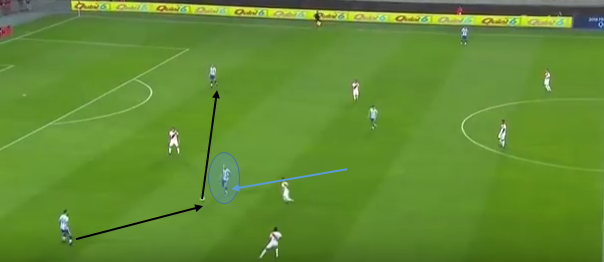
Another form of support might be dropping back and allowing one of the central defenders to drive with the ball forwards into space. This might be used when central defenders are good on the ball and willing to combine and play forwards. This type of rotation between defensive midfielder and central defender ilustrates the example of interchangeable roles of these two positions.
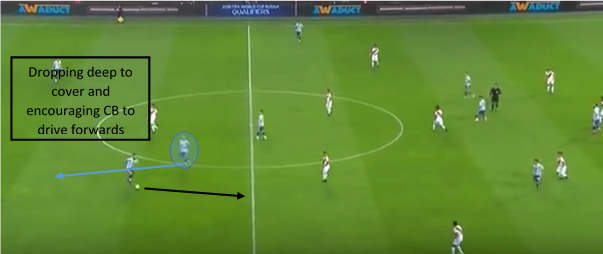
Defensive midfielder might also choose to drop in between two centre backs what leaves him as a last man. This is especially useful when playing against two strikers moving in a compact unit (creating 3v2 situation). It also allows full backs to move higher up the pitch and centre backs to operate in wider areas.
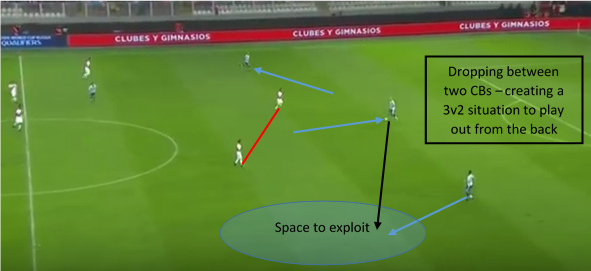
Another option involves forming a triangle with centre backs when one of the two centre backs drops deeper and the other one steps up to play in line with defensive midfielder. This option provides some defensive cover when at the same time, majorily overloads central areas to play through the middle.

More offensive responsibilities of a controlling defensive midfielder which place more technical demands might be to support full backs when in possession. Being a ‘link’ midfielder when the ball is wide, provides more options of other central midfielders to go higher up the pitch and look to receive the ball in more advanced attacking areas (thus potentially using their strengths in a more productive way).
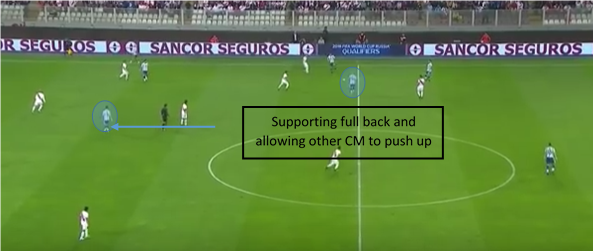
Being a ‘link’ player in central areas is another attacking responsibility of the defensive midfielder. His aim would be to link play between the first and final thirds of the pitch. He should also help to create an overload around central areas when other midfielders drop in deeper to receive. Being able to distribute the ball over longer distances into wide areas is another valued quality on this position.
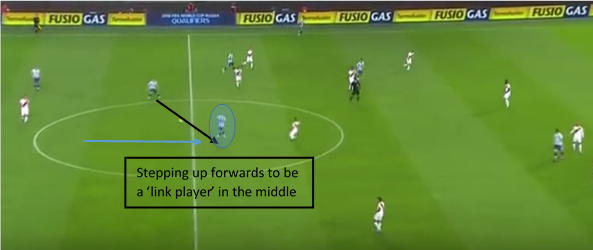
More flexible players on centre back’s and defensive midfielder’s positions provide more options when building up from the back as well as give more defensive security. Having three (2 CB’s and 1 DM’s) players that possess defensive qualities as well as good technical ability, make it easier to defend against opposition attacking movements. It also gives more flexibility in playing the ball forwards.
By Alex Trukan, Development Coach, Nottingham Forest
@AlexTrukan


